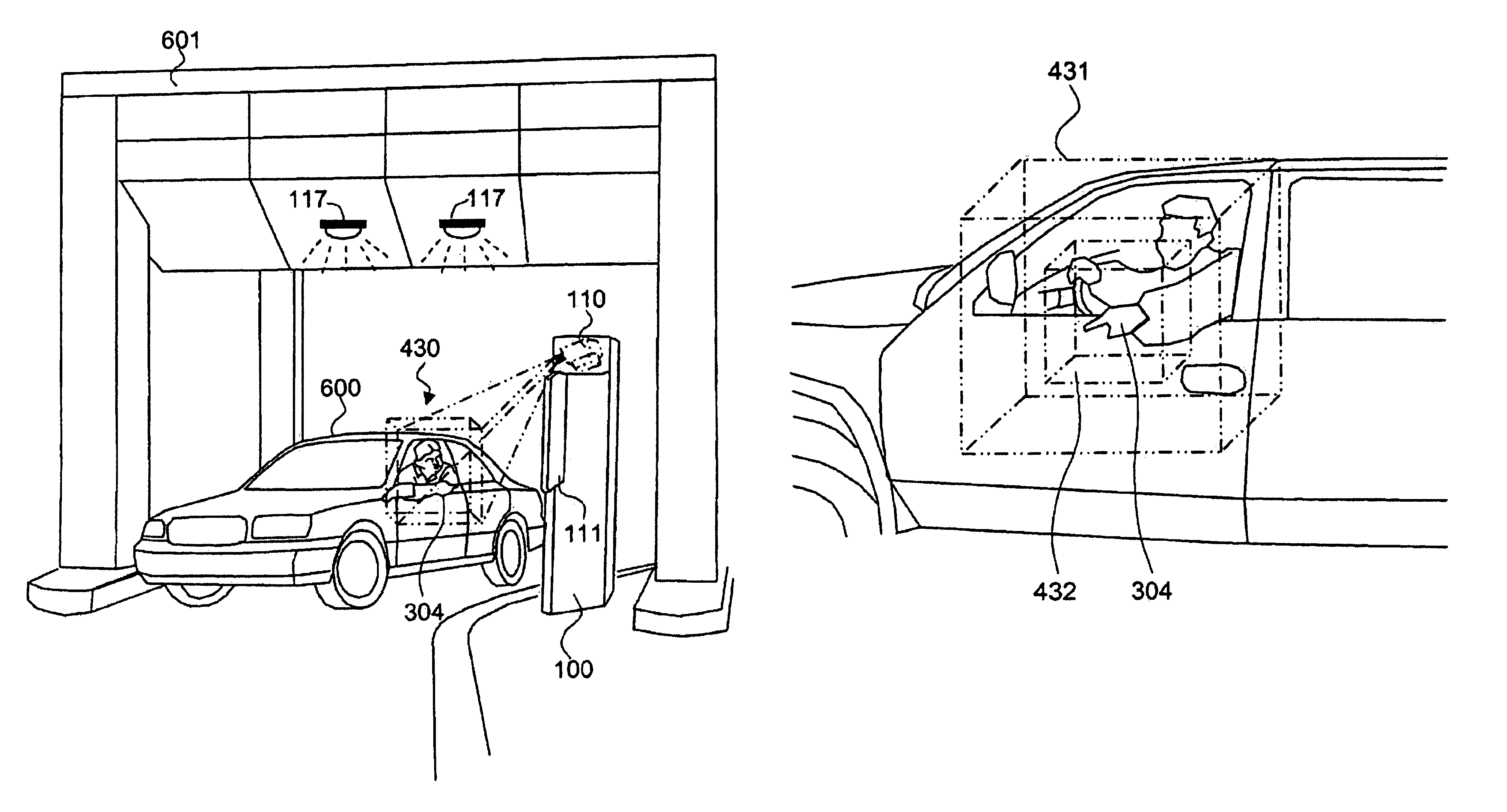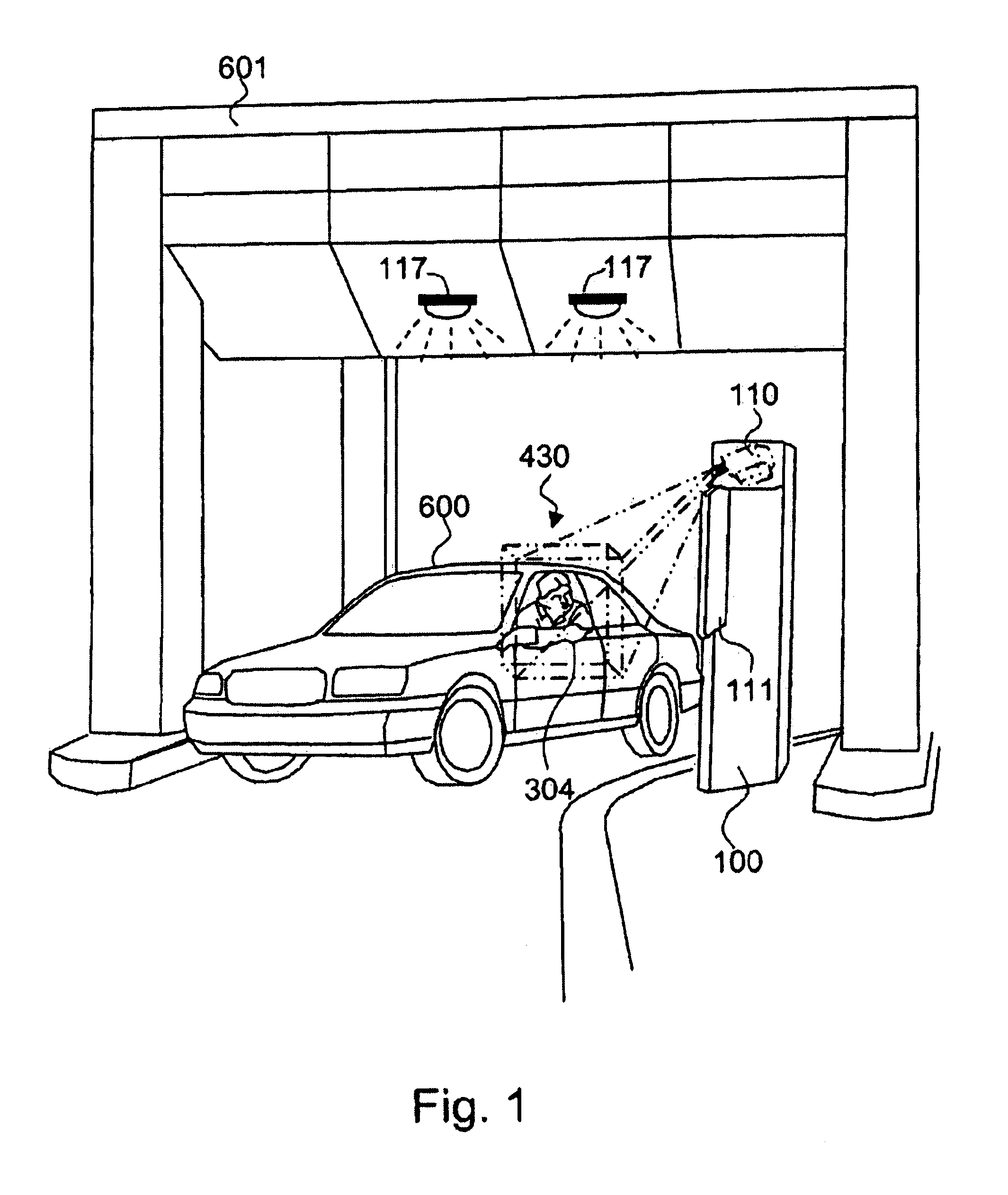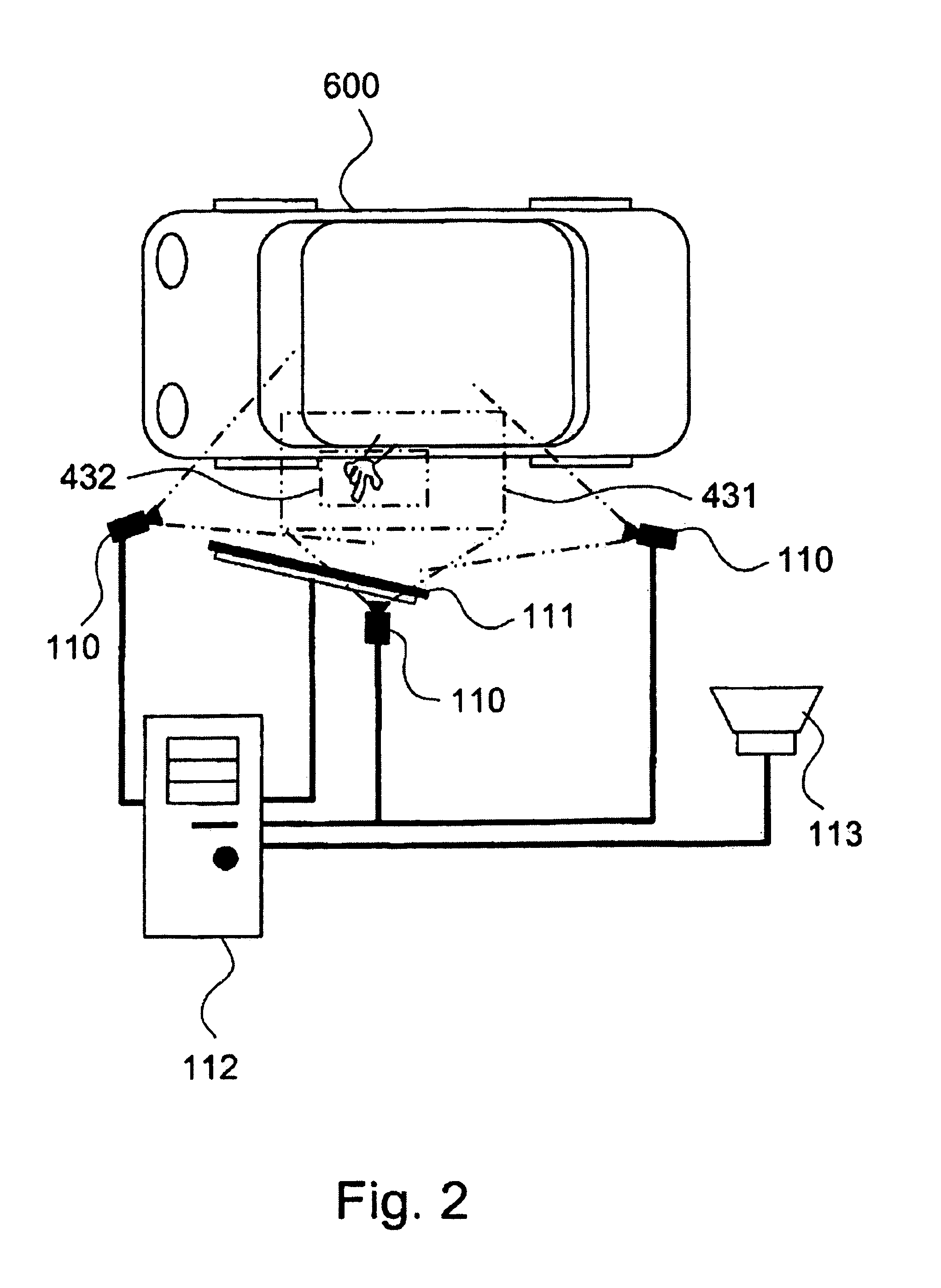Method and apparatus for providing virtual touch interaction in the drive-thru
a technology of virtual touch and drive-thru, which is applied in the direction of process and machine control, navigation instruments, instruments, etc., can solve the problems of increasing the number of attendants with the three windows, creating a very unpleasant customer experience, and affecting the relevant building construction cos
- Summary
- Abstract
- Description
- Claims
- Application Information
AI Technical Summary
Benefits of technology
Problems solved by technology
Method used
Image
Examples
Embodiment Construction
[0045]FIG. 1 shows the overall view of the VTOS. In this particular exemplary embodiment shown in FIG. 1, the VTOS consists of a housing (enclosure) 100, plurality of the image-capturing system 110, a display system 111, and a sound system 113 (hidden in the enclosure). The processing and controlling system 112 is connected to these peripheral sub-systems, such as the image-capturing system 110, the display system 111, and the sound system 113, as in the exemplary embodiment shown in FIG. 2. The image-capturing system 110 is defined to be a system with plurality of image-capturing devices, such as cameras, frame grabbers and all relevant peripherals, in the VTOS. The processing and controlling system 112 can be installed inside the housing 100 in the exemplary embodiment shown in FIG. 1, or it can be installed in a remote place within the restaurant building or any of its surrounding areas, where the system can be securely and efficiently placed. The owner or designer of the particu...
PUM
 Login to View More
Login to View More Abstract
Description
Claims
Application Information
 Login to View More
Login to View More - R&D
- Intellectual Property
- Life Sciences
- Materials
- Tech Scout
- Unparalleled Data Quality
- Higher Quality Content
- 60% Fewer Hallucinations
Browse by: Latest US Patents, China's latest patents, Technical Efficacy Thesaurus, Application Domain, Technology Topic, Popular Technical Reports.
© 2025 PatSnap. All rights reserved.Legal|Privacy policy|Modern Slavery Act Transparency Statement|Sitemap|About US| Contact US: help@patsnap.com



